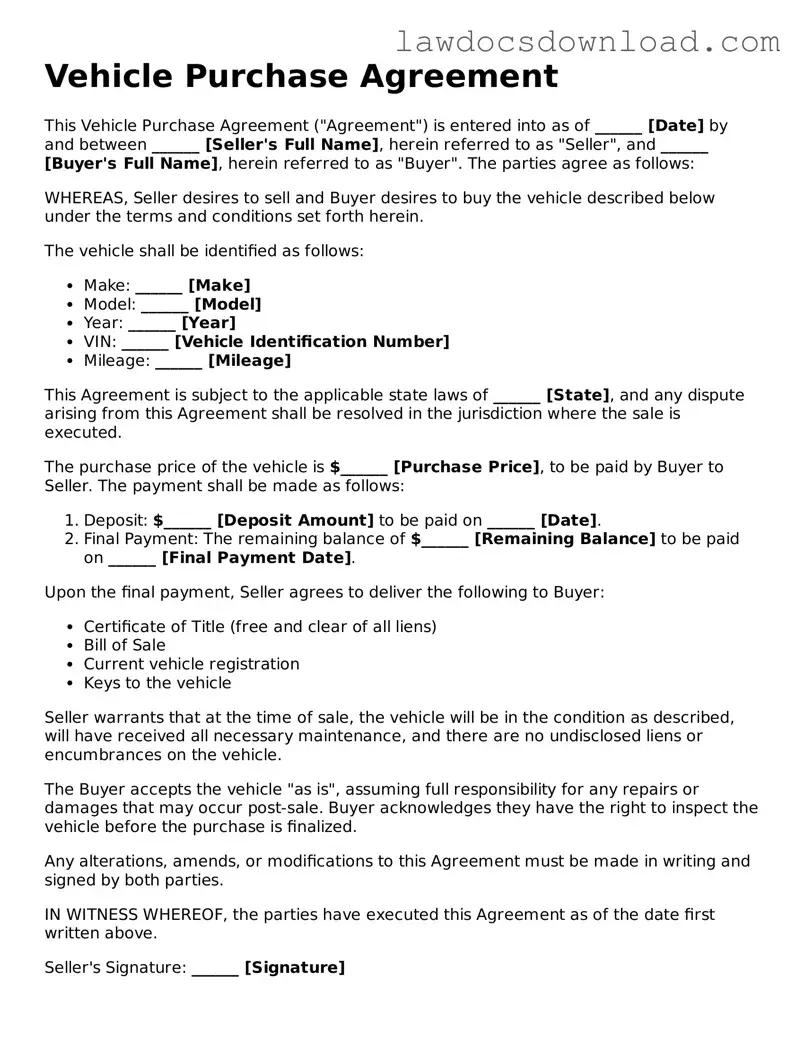Vehicle Purchase Agreement
This Vehicle Purchase Agreement ("Agreement") is entered into as of ______ [Date] by and between ______ [Seller's Full Name], herein referred to as "Seller", and ______ [Buyer's Full Name], herein referred to as "Buyer". The parties agree as follows:
WHEREAS, Seller desires to sell and Buyer desires to buy the vehicle described below under the terms and conditions set forth herein.
The vehicle shall be identified as follows:
- Make: ______ [Make]
- Model: ______ [Model]
- Year: ______ [Year]
- VIN: ______ [Vehicle Identification Number]
- Mileage: ______ [Mileage]
This Agreement is subject to the applicable state laws of ______ [State], and any dispute arising from this Agreement shall be resolved in the jurisdiction where the sale is executed.
The purchase price of the vehicle is $______ [Purchase Price], to be paid by Buyer to Seller. The payment shall be made as follows:
- Deposit: $______ [Deposit Amount] to be paid on ______ [Date].
- Final Payment: The remaining balance of $______ [Remaining Balance] to be paid on ______ [Final Payment Date].
Upon the final payment, Seller agrees to deliver the following to Buyer:
- Certificate of Title (free and clear of all liens)
- Bill of Sale
- Current vehicle registration
- Keys to the vehicle
Seller warrants that at the time of sale, the vehicle will be in the condition as described, will have received all necessary maintenance, and there are no undisclosed liens or encumbrances on the vehicle.
The Buyer accepts the vehicle "as is", assuming full responsibility for any repairs or damages that may occur post-sale. Buyer acknowledges they have the right to inspect the vehicle before the purchase is finalized.
Any alterations, amends, or modifications to this Agreement must be made in writing and signed by both parties.
IN WITNESS WHEREOF, the parties have executed this Agreement as of the date first written above.
Seller's Signature: ______ [Signature]
Buyer's Signature: ______ [Signature]
